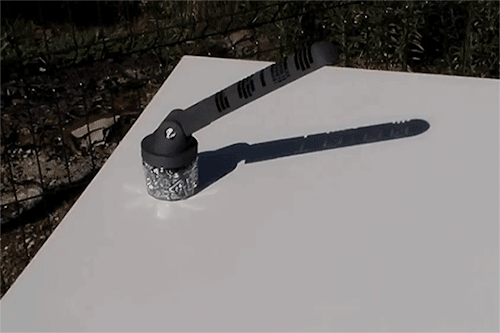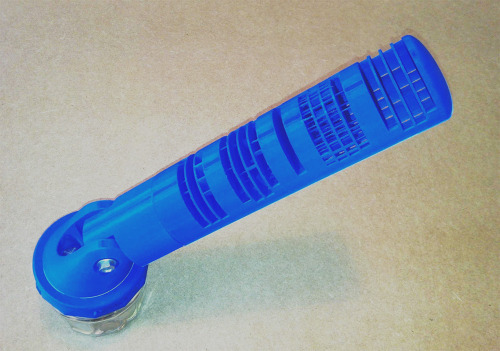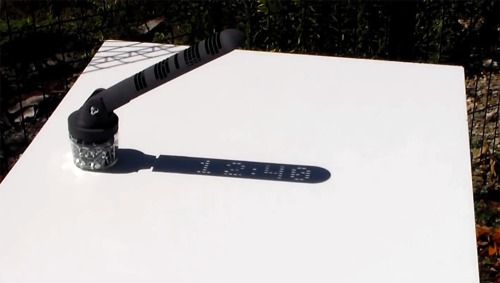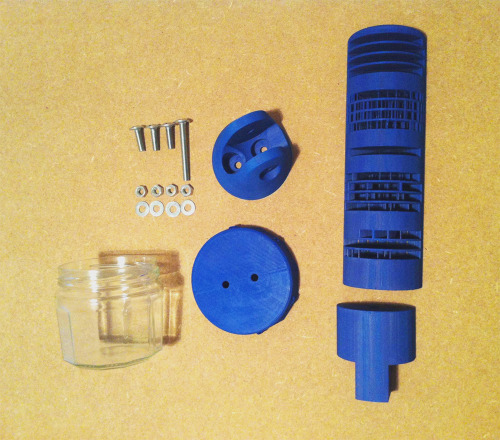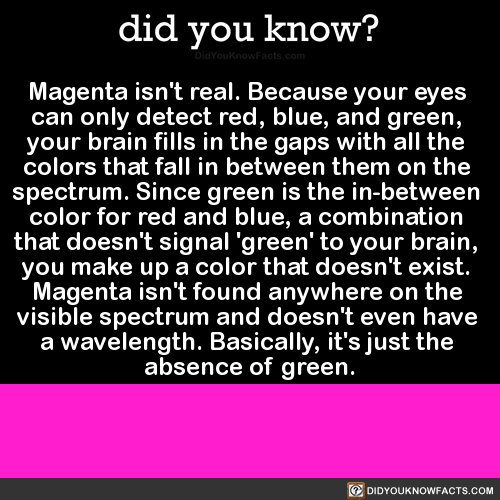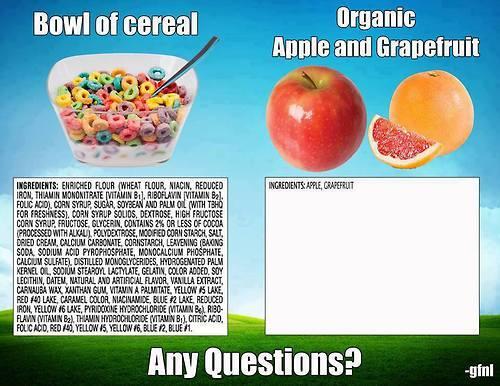What The Article Doesn’t Tell You Is That This Has Happened Once Before, And She Forgot How To Use

what the article doesn’t tell you is that this has happened once before, and she forgot how to use her drill. she remembered how to drill later one, but then she shut down again for no clear reason. it is still unclear if she remembers how to drill. i love her so much
More Posts from Science-is-magical and Others

From vision to hand action
Our hands are highly developed grasping organs that are in continuous use. Long before we stir our first cup of coffee in the morning, our hands have executed a multitude of grasps. Directing a pen between our thumb and index finger over a piece of paper with absolute precision appears as easy as catching a ball or operating a doorknob. The neuroscientists Stefan Schaffelhofer and Hansjörg Scherberger of the German Primate Center (DPZ) have studied how the brain controls the different grasping movements. In their research with rhesus macaques, it was found that the three brain areas AIP, F5 and M1 that are responsible for planning and executing hand movements, perform different tasks within their neural network. The AIP area is mainly responsible for processing visual features of objects, such as their size and shape. This optical information is translated into motor commands in the F5 area. The M1 area is ultimately responsible for turning this motor commands into actions. The results of the study contribute to the development of neuroprosthetics that should help paralyzed patients to regain their hand functions (eLife, 2016).
The three brain areas AIP, F5 and M1 lay in the cerebral cortex and form a neural network responsible for translating visual properties of an object into a corresponding hand movement. Until now, the details of how this “visuomotor transformation” are performed have been unclear. During the course of his PhD thesis at the German Primate Center, neuroscientist Stefan Schaffelhofer intensively studied the neural mechanisms that control grasping movements. “We wanted to find out how and where visual information about grasped objects, for example their shape or size, and motor characteristics of the hand, like the strength and type of a grip, are processed in the different grasp-related areas of the brain”, says Schaffelhofer.
For this, two rhesus macaques were trained to repeatedly grasp 50 different objects. At the same time, the activity of hundreds of nerve cells was measured with so-called microelectrode arrays. In order to compare the applied grip types with the neural signals, the monkeys wore an electromagnetic data glove that recorded all the finger and hand movements. The experimental setup was designed to individually observe the phases of the visuomotor transformation in the brain, namely the processing of visual object properties, the motion planning and execution. For this, the scientists developed a delayed grasping task. In order for the monkey to see the object, it was briefly lit before the start of the grasping movement. The subsequent movement took place in the dark with a short delay. In this way, visual and motor signals of neurons could be examined separately.
The results show that the AIP area is primarily responsible for the processing of visual object features. “The neurons mainly respond to the three-dimensional shape of different objects”, says Stefan Schaffelhofer. “Due to the different activity of the neurons, we could precisely distinguish as to whether the monkeys had seen a sphere, cube or cylinder. Even abstract object shapes could be differentiated based on the observed cell activity.”
In contrast to AIP, area F5 and M1 did not represent object geometries, but the corresponding hand configurations used to grasp the objects. The information of F5 and M1 neurons indicated a strong resemblance to the hand movements recorded with the data glove. “In our study we were able to show where and how visual properties of objects are converted into corresponding movement commands”, says Stefan Schaffelhofer. “In this process, the F5 area plays a central role in visuomotor transformation. Its neurons receive direct visual object information from AIP and can translate the signals into motor plans that are then executed in M1. Thus, area F5 has contact to both, the visual and motor part of the brain.”
Knowledge of how to control grasp movements is essential for the development of neuronal hand prosthetics. “In paraplegic patients, the connection between the brain and limbs is no longer functional. Neural interfaces can replace this functionality”, says Hansjörg Scherberger, head of the Neurobiology Laboratory at the DPZ. “They can read the motor signals in the brain and use them for prosthetic control. In order to program these interfaces properly, it is crucial to know how and where our brain controls the grasping movements”. The findings of this study will facilitate to new neuroprosthetic applications that can selectively process the areas’ individual information in order to improve their usability and accuracy.
Newborn baby brain scans will help scientists track brain development
Scientists have published ground-breaking scans of newborn babies’ brains which researchers from all over the world can download and use to study how the human brain develops.

(Image caption: Diffusion MRI of the developing neonatal brain (Left: Multi-shell high angular resolution diffusion data decomposed into a free water component (greyscale background image) and a directionally resolved brain tissue component shown as rendered surfaces. Middle and right: Visualisation of anatomical connections in the developing brain derived from the brain tissue component.)
The images are part of the Developing Human Connectome Project (dHCP), a collaboration between King’s College London, Imperial College London and the University of Oxford, which will uncover how the brain develops, including the wiring and function of the brain during pregnancy and how this changes after birth. The dHCP researchers are sharing their images and methods online so that other scientists from around the world can use the data in their own research.
Using Magnetic Resonance Imaging (MRI) scanners at Evelina London Children’s Hospital, the team has developed new techniques which enable images of the brains of foetuses and babies to be captured. Researchers have overcome problems caused by babies’ movement and small size, as well as the difficulties in keeping vulnerable infants safe in the MRI scanner, so that they can now produce highly detailed and rich information on brain development.
The project will help scientists to understand how conditions such as autism develop, or how problems in pregnancy affect brain growth.
‘The Developing Human Connectome Project is a major advance in understanding human brain development - it will provide the first map of how the brain’s connections develop, and how this goes wrong in disease,’ said Lead Principal Investigator, Professor David Edwards from King’s College London and Consultant Neonatologist at Evelina London.
The research collaboration is funded by a €15 million Synergy Grant from the European Research Council, and one of the goals of the project is to make sure that the data is shared as widely across the world as possible. Scientists are able to download the images at https://data.developingconnectome.org.
For this project, Professor Jo Hajnal’s team at King’s College London developed new MRI technology specifically designed to provide high resolution scans of newborn and fetal brains.
In addition, a group led by Professor Daniel Rueckert’s at Imperial College London developed new computer programs to analyse the images. 'We have been developing novel approaches that help researchers by automatically analysing the rich and comprehensive MR images that are collected as part of dHCP,’ he explained.
At the University of Oxford, Professor Steve Smith’s team has been developing specific techniques to define where the connections are in the developing brain.
As well as studying more babies, the team at Evelina London are now recruiting pregnant mothers for foetal scanning. Meanwhile, the first release of images today will allow scientists to start to explore these powerful images and begin mapping out the complexities of human brain development in a whole new way.

Birds developed the unique vocal organ that enables them to sing more than 66 million years ago when dinosaurs walked the Earth, a new fossil discovery has shown.
But the earliest syrinx, an arrangement of vibrating cartilage rings at the base of the windpipe, was still a long way from producing the lilting notes of a song thrush or blackbird.
Scientists believe the extinct duck and goose relative that possessed the organ was only capable of making honking noises.
The bird, Vegavis iaai, lived during the Cretaceous era. Although its fossil bones were unearthed from Vega Island in Antarctica in 1992, it was not until three years ago that experts spotted the syrinx.
All birds living today are descended from a particular family of dinosaurs that developed feathers and the ability to fly.
The new discovery suggests the syrinx is another hallmark of birds that was absent from non-avian dinosaurs…
The 12 Cranial Nerves and Starbucks

When you walk into Starbucks and you..
I. Smell the coffee aroma (olfactory)..
II. Read the order menu from about 20 feet away (optic) then you..
III. Pupils constrict as you look at items, such as muffins, closer (oculomotor)..
IV. You look up at salesperson then down at your money as you pay (trochlear)..
V. You clench your teeth and touch your face when they called your drink (trigeminal)..
VI. You look side-to-side to see if anyone else has ordered the same drink (abdsucens)..
VII. You smile because you realize this IS your drink (facial), then..
VIII. You hear someone say “You can sit here, we are leaving” (auditory). As you sit..
IX. You taste the sweet whipped cream on the top of your drink (glossopharyngeal)..
X. You say “Ahhhh this is good!” (vagus)..
XI. You look at the person next to you because they heard you and then you shrug your shoulders (spinal accessory)..
XII. When they look away you stick your tongue at them (hypoglossal)!
-
 faltapan liked this · 1 year ago
faltapan liked this · 1 year ago -
 blackcherry-cupcake liked this · 2 years ago
blackcherry-cupcake liked this · 2 years ago -
 dogiechik reblogged this · 3 years ago
dogiechik reblogged this · 3 years ago -
 dumb-bitch-corperation liked this · 4 years ago
dumb-bitch-corperation liked this · 4 years ago -
 aeternum-ablaze reblogged this · 4 years ago
aeternum-ablaze reblogged this · 4 years ago -
 motakimask reblogged this · 4 years ago
motakimask reblogged this · 4 years ago -
 motakimask liked this · 4 years ago
motakimask liked this · 4 years ago -
 severelyenchanted liked this · 4 years ago
severelyenchanted liked this · 4 years ago -
 the-navistar-carol reblogged this · 4 years ago
the-navistar-carol reblogged this · 4 years ago -
 the-navistar-carol liked this · 4 years ago
the-navistar-carol liked this · 4 years ago -
 rhubarbplants reblogged this · 4 years ago
rhubarbplants reblogged this · 4 years ago -
 rhubarbplants liked this · 4 years ago
rhubarbplants liked this · 4 years ago -
 starlingnostalgic reblogged this · 4 years ago
starlingnostalgic reblogged this · 4 years ago -
 starlingnostalgic liked this · 4 years ago
starlingnostalgic liked this · 4 years ago -
 twin-books liked this · 4 years ago
twin-books liked this · 4 years ago -
 orville-redenbacher-space-hero liked this · 4 years ago
orville-redenbacher-space-hero liked this · 4 years ago -
 legendzjagz liked this · 4 years ago
legendzjagz liked this · 4 years ago -
 veridienn reblogged this · 4 years ago
veridienn reblogged this · 4 years ago -
 veridienn liked this · 4 years ago
veridienn liked this · 4 years ago -
 sweetmeatdale reblogged this · 4 years ago
sweetmeatdale reblogged this · 4 years ago -
 callmequoteman liked this · 4 years ago
callmequoteman liked this · 4 years ago -
 artcoloredpanda reblogged this · 4 years ago
artcoloredpanda reblogged this · 4 years ago -
 lilpeekabooze liked this · 4 years ago
lilpeekabooze liked this · 4 years ago -
 sleeping-with-adub reblogged this · 4 years ago
sleeping-with-adub reblogged this · 4 years ago -
 sleeping-with-adub liked this · 4 years ago
sleeping-with-adub liked this · 4 years ago -
 h4teh3x reblogged this · 4 years ago
h4teh3x reblogged this · 4 years ago -
 h4teh3x liked this · 4 years ago
h4teh3x liked this · 4 years ago -
 tommyvlogs liked this · 4 years ago
tommyvlogs liked this · 4 years ago -
 hope-less-vandyne reblogged this · 4 years ago
hope-less-vandyne reblogged this · 4 years ago -
 hereforthefanart liked this · 4 years ago
hereforthefanart liked this · 4 years ago -
 quebedazarn liked this · 4 years ago
quebedazarn liked this · 4 years ago -
 its-themikeyboi liked this · 4 years ago
its-themikeyboi liked this · 4 years ago -
 hello-im-bi-furious liked this · 5 years ago
hello-im-bi-furious liked this · 5 years ago -
 heely3feely liked this · 5 years ago
heely3feely liked this · 5 years ago -
 science-is-magical reblogged this · 5 years ago
science-is-magical reblogged this · 5 years ago -
 0uro8oros reblogged this · 5 years ago
0uro8oros reblogged this · 5 years ago -
 0uro8oros liked this · 5 years ago
0uro8oros liked this · 5 years ago -
 telekinetichulder liked this · 5 years ago
telekinetichulder liked this · 5 years ago -
 infj-counclor liked this · 5 years ago
infj-counclor liked this · 5 years ago -
 crab73 liked this · 5 years ago
crab73 liked this · 5 years ago -
 astrangeevent2002 liked this · 5 years ago
astrangeevent2002 liked this · 5 years ago -
 frolicking-free reblogged this · 5 years ago
frolicking-free reblogged this · 5 years ago -
 kyber-erso liked this · 5 years ago
kyber-erso liked this · 5 years ago -
 lorylilybomber reblogged this · 5 years ago
lorylilybomber reblogged this · 5 years ago -
 checosabee-blog liked this · 5 years ago
checosabee-blog liked this · 5 years ago -
 supercalifragilistic-crisis liked this · 5 years ago
supercalifragilistic-crisis liked this · 5 years ago
